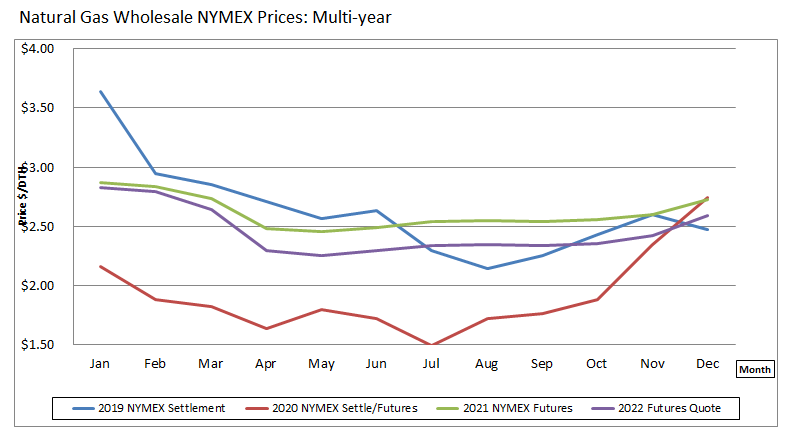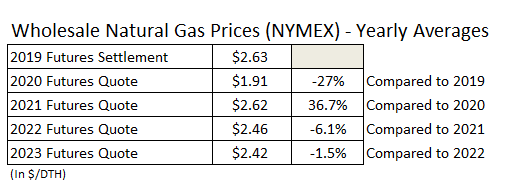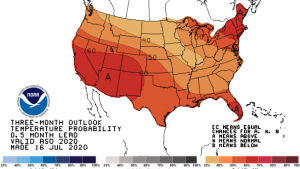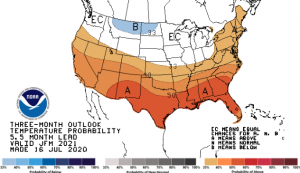July Market Conditions: COVID-19 Resurgence Brings More Business Challenges & Weakness to Energy Markets
What to Know, Now
As COVID-19 cases continue to rise, and more people continue to stay home, demand will remain depressed and the energy market will likely stay low.
Natural Gas
Stored natural gas is currently at surplus levels with production still outpacing demand, keeping downward pressure on 2020 prices. However, recent hot weather has challenged the market with high electricity demand to power air conditioners. The result is an increase in prices in the near term (August to October) period.
Despite the recent increase, winter rates remain below typical winter pricing, and pricing is favorable for capturing low fixed rates. August weather may not be as hot as July and should support softening prices in August. The Natural Gas Wholesale NYMEX Prices table below shows the pricing trend from 2019 to 2022, with lower rates in 2020 and increasing costs into 2021.

Electricity
Since the price of electricity generally moves with the price of natural gas, the two prices have similar trends. Electric rates are fairly low but have seen increases with the arrival of hot summer weather. Price trends vary from state to state, but generally, prices are increasing each calendar year after this one.


The Bottom Line
The current pricing trend creates higher fixed price rates for the longer term (two- and three-year) natural gas and electric contracts. Twelve-month contracts may have the lowest fixed rates, while index prices may be low if a hot summer does not continue.
Winter-focused heating accounts will see a slight cost reduction in 2020, while accounts with steady year-round demand (such as heat and hot water accounts) may see lower costs this summer and more favorable fixed contract rates. If you rely on fixed-price contracts to control budgeted costs, this is an excellent time to review the impact of your next contract.
Longer-term fixed-price contracts are currently at higher rates than shorter-term ones but offer price stability during volatile periods such as this summer and next winter. Since energy costs vary in each state, it is best to validate any savings opportunities with refreshed pricing on your next supply agreement.
Not sure what your options are or how to proceed? Bright Power can help.
Temperature Probability Maps
Current temperature forecasts for the remainder of this year are calling for above-normal temperatures for most of the U.S. These forecasts will likely continue to support market price volatility as a hot summer and early fall can trigger high electric and natural gas usage and rates, while a mild winter could reverse that natural gas winter demand causing prices to decline.

